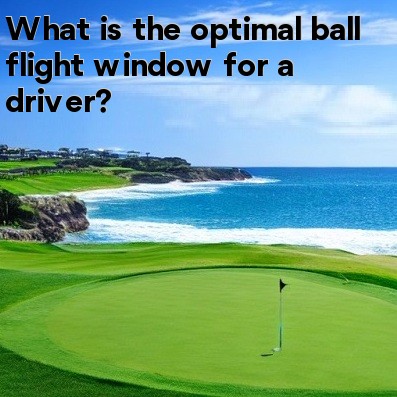
What is the Optimal Ball Flight Window for a Driver?
When it comes to hitting the driver in golf, finding the optimal ball flight window is crucial for achieving maximum distance and accuracy. The ball flight window refers to the ideal launch angle, spin rate, and shot shape that allows the ball to travel the farthest while staying within the desired target line. Let's dive into the key factors that make up the optimal ball flight window:
- Launch Angle: The launch angle refers to the angle at which the ball leaves the clubface after impact. For most golfers, the ideal launch angle for a driver is between 10 to 12 degrees. A slightly higher launch angle can help generate more carry distance, while a lower launch angle may result in more roll.
- Spin Rate: The spin rate measures the amount of backspin or topspin on the ball after impact. In general, a lower spin rate is desired for longer drives. Ideally, the spin rate for a driver should be around 2000 to 3000 RPM (revolutions per minute) for lower- to mid-handicap golfers. Professionals generally strive for even lower spin rates.
- Shot Shape: The shot shape refers to whether the ball curves left (fade for a right-handed golfer) or right (draw for a right-handed golfer). While individual preferences may differ, a slight draw or fade can help maximize distance off the tee. However, it's important to have control over your shot shape to avoid hitting errant shots.
Together, these factors work collectively to achieve the optimal ball flight window for a driver. The launch angle, spin rate, and shot shape are interrelated, and adjusting one can affect the others. For example, changing the launch angle may have an impact on the spin rate, and consequently, the final shot shape.
It's worth noting that the optimal ball flight window can vary depending on individual swing characteristics and playing conditions. Factors such as swing speed, angle of attack, clubhead speed, and wind conditions can influence the ideal ball flight as well.
As a golfer, it's essential to understand your own tendencies and work with a professional instructor or club fitter to fine-tune your driver setup to find the optimal ball flight window. A launch monitor can also be a valuable tool in determining the ideal launch angle and spin rate for your swing.
Once you have found the optimal ball flight window for your driver, it's important to practice consistency. Developing a reliable swing that consistently produces shots within your desired ball flight window will help you hit more fairways and set up shorter approach shots.
In conclusion, the optimal ball flight window for a driver in golf is a combination of the launch angle, spin rate, and shot shape that allows for maximum distance and accuracy. Finding this ideal window requires understanding your swing characteristics, individualizing your setup, and practicing consistency. By achieving the optimal ball flight window, you can enhance your driving performance and take your game to new heights.





